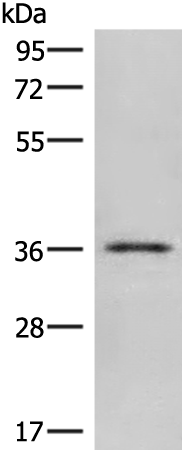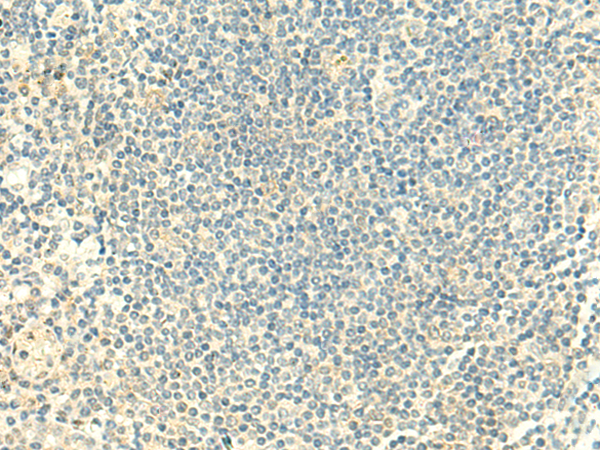

| WB | 1/200-1/1000 | Human,Mouse,Rat |
| IF | 咨询技术 | Human,Mouse,Rat |
| IHC | 1/40-1/200 | Human,Mouse,Rat |
| ICC | 技术咨询 | Human,Mouse,Rat |
| FCM | 咨询技术 | Human,Mouse,Rat |
| Elisa | 1/5000-1/10000 | Human,Mouse,Rat |
| Aliases | HML; MGL; HML2; CD301; CLECSF13; CLECSF14 |
| WB Predicted band size | 35 kDa |
| Host/Isotype | Rabbit IgG |
| Antibody Type | Primary antibody |
| Storage | Store at 4°C short term. Aliquot and store at -20°C long term. Avoid freeze/thaw cycles. |
| Species Reactivity | Human |
| Immunogen | Fusion protein of human CLEC10A |
| Formulation | Purified antibody in PBS with 0.05% sodium azide and 50% glycerol. |
+ +
以下是3篇涉及CLEC10A抗体的文献摘要信息:
1. **文献名称**:*CLEC10A is a specific marker for human CD1c+ dendritic cells*
**作者**:Schlitzer A. et al.
**摘要**:该研究通过单细胞分析发现CLEC10A可作为人CD1c+树突状细胞的表面标志物,其特异性抗体可用于流式分选及功能研究,揭示这类细胞在抗原呈递中的独特作用。
2. **文献名称**:*Targeting CLEC10A in tumor-associated macrophages enhances anti-tumor immunity*
**作者**:Li X. et al.
**摘要**:研究利用CLEC10A抗体阻断肿瘤相关巨噬细胞(TAMs)的免疫抑制信号,证明其可重塑肿瘤微环境并增强PD-1疗法的抗肿瘤效果。
3. **文献名称**:*CLEC10A regulates metabolic reprogramming of myeloid-derived suppressor cells in colorectal cancer*
**作者**:Wang Y. et al.
**摘要**:通过CLEC10A抗体干预实验,发现其通过调控糖代谢通路抑制髓系来源抑制细胞(MDSCs)的功能,从而抑制结直肠癌进展。
(注:以上为示例性内容,实际文献需通过PubMed/Google Scholar等平台以“CLEC10A antibody”或“CLEC10A function”为关键词检索获取。)
CLEC10A (C-type lectin domain family 10 member A), also known as CD301 or macrophage galactose-type C-type lectin (MGL), is a transmembrane protein belonging to the C-type lectin receptor family. It is primarily expressed on myeloid cells, including dendritic cells and macrophages, and plays a role in pathogen recognition and immune modulation. CLEC10A specifically binds to glycoconjugates containing terminal galactose or N-acetylgalactosamine (GalNAc) residues, such as tumor-associated Tn and sialyl-Tn antigens, which are linked to abnormal glycosylation in cancers.
This receptor is involved in both pro-inflammatory and anti-inflammatory responses. It promotes antigen uptake and presentation to T cells, enhancing anti-tumor immunity. However, CLEC10A also exhibits immunosuppressive functions by inducing regulatory T cells or tolerogenic dendritic cells, contributing to immune tolerance in contexts like allergies or autoimmune diseases.
CLEC10A antibodies are widely used in research to detect receptor expression via flow cytometry or immunohistochemistry. Functional studies employ these antibodies to block CLEC10A-ligand interactions, revealing its role in immune regulation, cancer progression, or microbial infections. Recent studies explore its potential as a therapeutic target, either to boost anti-cancer responses by disrupting immunosuppressive signals or to mitigate excessive inflammation. Its dual roles in immunity make CLEC10A a critical molecule in understanding disease mechanisms and developing immunotherapies.
×